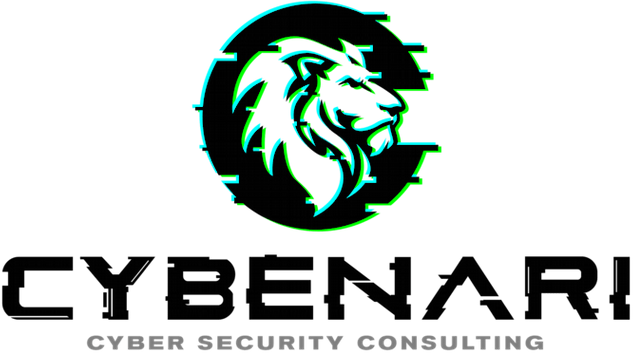The Secure Development Life Cycle (SDLC) is an approach to software development that incorporates security measures into each phase, from planning to deployment. Traditional software development life cycles often treat security as an afterthought, focusing more on feature development and functionality. The purpose of the Secure SDLC is to build security into every aspect of the process, minimizing vulnerabilities and risks at every step of the process.
Below, we break down the common phases of the Secure Development Life Cycle and explore best practices and popular tools used in each step.
But before we delve into the steps, we first need to define the goal of our SDLC. In my opinion, the goal is not to attempt to completely eliminate all vulnerabilities, as that is an unrealistic goal, but rather to detect vulnerabilities and risky areas as soon as possible, AKA “Shift Left”, so we can make the right decision on how to handle the risk.
Shift Left Paradigm
“Shifting left” refers to the practice of integrating testing and security measures earlier in the software development life cycle. Instead of treating these elements as late-stage tasks, they’re incorporated from the outset, reducing the time and cost of addressing issues later on. This approach aligns well with Agile and DevOps methodologies and makes security a foundational element of development. By “Shifting Left” we can identify and address security bugs much earlier, reducing the cost and complexity of making changes later on.
Phases of Secure SDLC
When designing your SDLC you should try to incorporate some variation of following steps. In each organization this will look differently, but usually the overarching methodology is pretty similar. Of course organization with a more “mature” security posture will have this process nailed down, while in organization in which security is still growing, its common to see that only some parts of the process exist. It also OK for different teams in the organization to have variations of the process, as not all teams have applications with the same risk profile and resources, however these variations should be designed and thought of and not due to a lack of awareness.
1. Requirement Analysis
Goal: To clearly define both functional and security objectives for the application.
the Requirement Analysis phase is a critical component of the Secure Software Development Life Cycle (Secure SDLC) process, setting the groundwork for the security, functionality, and compliance aspects of the project. In this phase, business requirements are collected, analyzed, and documented, but with an added focus on security needs. The goal is to identify and define both functional and non-functional requirements, such as performance, reliability, and perhaps most importantly, security measures needed to protect against threats and vulnerabilities. Security requirements may encompass considerations such as data encryption, authentication, authorization, and audit trails. This is also the phase where compliance with regulatory standards like GDPR, HIPAA, or PCI-DSS is considered.
Tools: Usually any collaborative note taking system the organization is using like Jira, Confluence or Google Docs.
2. System Design
Goal: To create a robust architecture that is secure by design.
Here, developers design the application’s architecture. Secure coding standards are laid out, and threat modeling is employed to anticipate vulnerabilities. It is common that when the system we are designing has high security risk requirements, for example, it’s a payment micro service that is likely to be targeted by attackers, then security experts are involved heavily in the design and threat modeling.
Tools: Tools used for drawing software and system architectures like:
- Microsoft Threat Modeling Tool: For analyzing potential security threats.
- draw.io for drawing system designs
- Any design drawing tools.
3. Development
Goal: To develop secure, efficient, and maintainable code that meets both the functional and security requirements outlined in earlier phases.
The development phase is the crux of the Secure Development Life Cycle where the actual coding happens. Developers are expected to adhere to secure coding guidelines and standards set forth in the design phase. This includes implementing secure data handling, authentication, and encryption protocols when relevant, among other security measures. Code reviews focusing on security aspects are a crucial part of this phase to catch any vulnerabilities or bad practices early on. Code is also version-controlled to track changes and to roll back if a security issue is discovered.
This phase can include the following tools and procedures:
- Secure code reviews
- Static Application Security Testing (SAST) that check code security. This scan can happen after the code is integrated into SVN or while writing the code (usually in the form of an IDE plugin), or both.
- Software Composition Analysis (SCA) – checks if your code is using libraries with known security vulnerabilities
- Writing security tests – Security tests that check for common vulnerabilities like authentication and authorization flaws. It is also common to write business logic security tests here.
Tools:
- Checkmarx: This tool performs static application security testing to identify vulnerabilities in the code.
- BitBucket/GitHub: Version control is critical for tracking changes, collaborating among team members, and performing code reviews.
- Snyk – A Software Composition Analysis (SCA) tool that checks of your code is using libraries with known security vulnerabilities.
- Dependabot – A free SCA tools built-into GitHub.
- SonarQube: This tool offers continuous inspection of code quality and can detect security vulnerabilities, bugs, and code smells.
4. Testing
Goal: To thoroughly validate the application for functional correctness, performance, and most crucially, security.
The Testing phase in the Secure Development Life Cycle is multi-faceted and aims to identify any flaws, vulnerabilities, or gaps that could pose security risks. The application’s resilience is tested against various types of attacks. Both automated and manual testing methodologies are employed, and they can range from unit testing for individual code components to penetration testing that simulates real-world cyberattacks. Organizations that have a Bug Bounty Program, also sometimes release a beta version of the feature being tested, to their Bug Bounty Hunters to check for vulnerabilities before they are released to the general public.
Best Practices:
- Implement Dynamic Application Security Testing (DAST) to find vulnerabilities in an application during runtime.
- Perform penetration testing to simulate cyber attacks and identify potential security flaws.
- Use fuzz testing to input random data into the application to check for unexpected or insecure behaviors.
- Bug Bounty Campaign – Release the feature only to the Bug Bounty program to check for vulnerabilities
Tools:
- Acunetix: Specializes in scanning web applications and detecting various vulnerabilities, such as SQL Injection and Cross-Site Scripting (XSS).
- Veracode: Offers a comprehensive set of security testing tools, including DAST capabilities, to identify vulnerabilities in running applications.
- Burp Suite: This is a useful tool for manual penetration testing of web applications. It offers features like scanning, crawling, and analysis to find security vulnerabilities.
- AFL (American Fuzzy Lop): This is a popular fuzzing tool that can help uncover buffer overflows, memory leaks, and other vulnerabilities by using randomized test cases.
- HackerOne/BugCrowd – Popular Bug Bounty Hunting platforms.
5. Release
Goal: To securely and seamlessly transition the application from the development and testing environments into live production, while also preparing all supplemental materials and configurations that accompany a software release.
The Release stage serves as a bridge between the Deployment phase and the end-users. It’s not just about pushing the code live but involves comprehensive planning and execution to ensure a smooth user experience. This includes customer notifications, updating documentation and final security audits. The stage is crucial for last-minute security checks that could include reviewing all implemented security measures, verifying compliance with regulations, double-checking access controls and making sure that all vulnerabilities have been fixed (or at least the medium, high and critical severity vulnerabilities have been fixed). All release activities are documented, and rollback plans are prepared in case the release introduces unforeseen issues or vulnerabilities.
Best Practices:
- Implement a change management process to document what is being released, why, and what the potential impacts are.
- Utilize rollback strategies so that if something goes wrong, you can revert to a previous, stable version.
- Gradual Release – Some organizations like to release high risk features gradually, i.e not to all users are once, but rather to a select few, then gradually releasing to more and more users. This makes sense from a security perspective since the impact for security vulnerabilities may have limited effect (not all users have the vulnerable feature)
- Conduct a post-release audit to verify that all security measures have been correctly implemented and are functioning as expected.
Bonus: Developer Training
In some organizations, developer training is explicitly integrated into the Software Development Life Cycle (SDLC) as a dedicated phase. Whether or not it is formally considered a part of the SDLC, developer training remains a crucial aspect of producing secure and efficient code. Such training typically covers best practices, design patterns, and especially security protocols, aimed at equipping developers with the knowledge they need to avoid common pitfalls and vulnerabilities. Another important thing to cover in these trainings is the actual SDLC pipeline of the organization itself!, because you can have the best SDLC pipeline in the world, but if your developers don’t know how to use it, it becomes almost worthless.
Developer training shouldn’t be a one-off event but rather an ongoing process that updates teams with the latest tools, techniques, and threats. Ignoring this ‘phase’ can result in software that is full of vulnerabilities, potentially jeopardizing the entire application and, by extension, the organization. In this sense, developer training is an indispensable component of any well-rounded and secure development process.
Every Organization is Unique
Every organizations is unique with its own goals, challenges, and tech stacks and therefore, a one-size-fits-all approach to the Software Development Life Cycle (SDLC) seldom works. Organizations should tailor their SDLC, incorporating security measures that fit the specific needs, scale, and nuances of their operations. Application Security (AppSec) teams and experts play a pivotal role in this customization. Their task often involves striking a delicate balance between ensuring a high level of security and allowing for seamless development and deployment of applications. This often requires creative solutions, from automating security tests to integrating security checks directly into the developers’ environment. The goal is to produce secure code without hampering the development speed or introducing unnecessary complexities. By continually iterating and adapting the SDLC, organizations can maintain agility while also reinforcing their security posture, ensuring that the software not only meets functional requirements but also stands up to evolving security threats.

